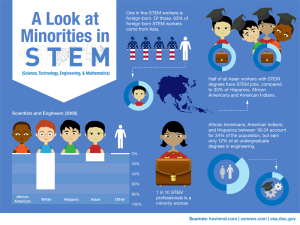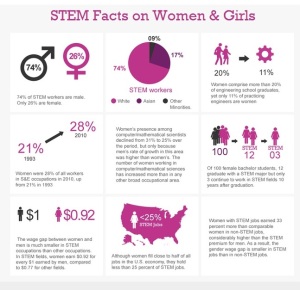STEM/STEAM chat!
March 2-7, 2015
S – Science
T – Technology
E – Engineering
[A – Arts]
M – Mathematics
So we’ve all heard of STEM, and many of us have heard of STEAM, but do we actually do this in the classroom? I’m a 7th grade science teacher, but I mostly focus on science, with a little bit of technology thrown in. We look at data tables and make graphs, but admittedly, many of my students still have no clue the difference between the x-axis and the y-axis. Occasionally, I’ll spice it up a lesson with an engineering task. Arts? Well, sometimes we draw stick figures, does that count?!
I’ll be the first to admit that I’m not giving STEAM it’s proper place in my classroom. One of my biggest worries for the future of our students is that we will have a country filled with science-illiterate citizens making big decisions. As a teacher in California, I see a heavy emphasis on English and math, while all the other subjects are becoming secondary. I assume it is similar in other parts of the country. While literacy and math skills are important, we can’t discredit science, history, and the arts because they are what make many students want to show up to school. We all need to work together to encourage students to seek out STEM-related opportunities and careers. How will you help?
While considering STEAM, it is important to consider two underrepresented groups in STEM-related careers: minorities and women.
Minorities in STEM:
Image source: http://www.transportationyou.org/infographic-10-startling-stem-stats/
Women in STEM:
Image source: http://www.forbes.com/sites/bonniemarcus/2014/03/28/mentors-help-create-a-sustainable-pipeline-for-women-in-stem/
More Resources:
TED Talk “Growing up in STEM as a girl”:
http://tedxtalks.ted.com/video/Growing-up-in-STEM-as-a-girl-Ca
Article on STEAM from US News:
http://www.usnews.com/news/stem-solutions/articles/2014/02/13/gaining-steam-teaching-science-though-art
I look forward to chatting with you all this week. Remember, one question per day Monday through Saturday!
-Mari Venturino
@msventurino
PS. If you’re like me, you get anxious when you don’t get a preview of the questions. Here they are!
Q1: How do you incorporate STEAM into your lessons? #slowchated
Q2: How can we break down barriers to incorporating STEAM into our classrooms? #slowchated
Q3: Share your favorite STEM/STEAM resources! #slowchated
Q4: Why do you think minority students feel discouraged from pursuing STEAM-related careers? #slowchated
Q5: How do you encourage girls to get involved in STEM-related fields, especially in MS and beyond? #slowchated
Q6: What action step are you going to take next week to add more STEAM-related fun into your classroom? #slowchated


